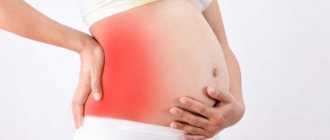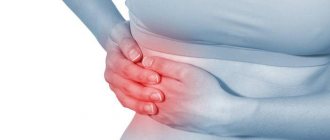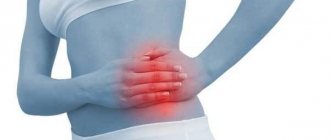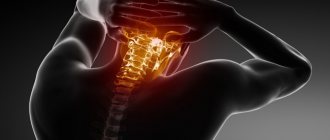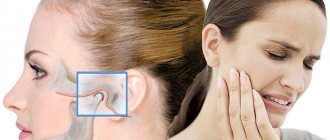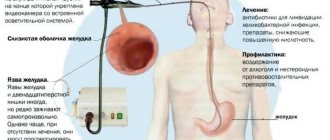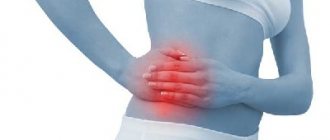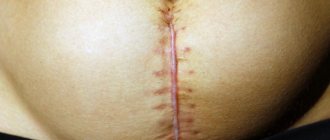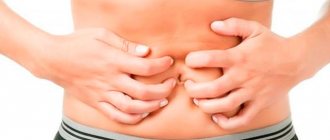Pain in the right hypochondrium is a serious symptom that should not be ignored. Many people are accustomed to associating liver problems with this unpleasant sensation. But in fact, many internal organs located nearby can cause pain on the right side.
Photo: pixabay.com
Where is the right hypochondrium located?
Initially, a person must understand where the right hypochondrium is located; topographic anatomy gives a clear answer to this question: this area is a site that is located on the front side of the abdominal wall.
At the same time, the following zones are limited from different sides:
- The uppermost boundary is the fifth rib.
- The lower border is the corresponding edge of the costal arch.
- The internal border runs along a vertical line that intersects the lower costal point.
- The external border is determined by the same imaginary vertical line, only it passes through the protrusion of the pelvic bone.
- If it is necessary to extend the lower border through the back area, it crosses the twelfth rib and the third vertebra located in the lumbar region.
Who should I ask for help and what actions should I take with these symptoms?
Right hypochondrium pain is accompanied by a deterioration in the condition of the whole body, especially with heavy physical exertion. Of course, everyone understands that you can’t endure it for long and you need to go to a doctor, but which one exactly? Once at the reception, it is best to get an appointment with a therapist, so that an experienced doctor can definitely advise which office is best to visit. However, practice usually shows that competent advice can be obtained from a gastroenterologist or infectious disease specialist.
Dull pain in the hypochondrium can be paroxysmal in nature.
Whether you are at work or at home, if you experience severe dull pain, you should immediately call an ambulance if you cannot get an appointment. Of course, an attack can be relieved with a cold compress, but in no case with a hot one. Painkillers should not be taken, as they will only interfere with determining an accurate diagnosis.
Doctor examining a patient
Don’t be alarmed if your doctor sends you for tests and an ultrasound; this will help him accurately determine the cause of your illness and prescribe a course of treatment. Under no circumstances listen to friends who advise you to take various medications. You can only hurt yourself and waste a lot of money. But about my grandmother’s methods of treating back pain, etc. we'll talk a little later.
to contents ^
Types of pain in the right hypochondrium
Pain manifestations that occur in this area are not of the same type and can be of a different nature. This feature is very important, since the preliminary diagnosis may depend on the specifics of the sensations.
In most cases, pain in the right hypochondrium is of the following nature:
- Acute pain traditionally indicates the presence of diseases associated with the gallbladder. Bile is usually formed in the liver; the human body requires it to maintain the normal functioning of the digestive system, since it contains all the enzymes necessary for this. However, sometimes it is produced in excess, all excess is transported to the gallbladder, and from there to the duodenum.
- Burning pain, especially in the presence of a feeling of nausea or vomiting, and also radiating to the shoulder or shoulder blade , in most cases is the first sign of cholecystitis occurring in the acute phase. This inflammatory process can be caused by the formation of gallstones, systematically incorrect and potentially harmful diet, or infection in the body.
- Dull pain is most often accompanied by a change in skin tone and may be a sign of inflammatory processes in the gallbladder , which often become chronic.
- The manifestation of nagging pain most often occurs due to liver enlargement , the reasons for this phenomenon can be very different. It may also be a symptom of chronic hepatitis, which usually does not manifest itself for a long time, or a consequence of poor nutrition and consumption of large amounts of too fatty foods.
- The most severe pain is most often associated with impaired liver function , this can be caused by hepatitis, excessive consumption of alcohol, overdose of pharmacological drugs or acute chemical poisoning.
- Aching pain in most cases is caused by impaired contractions in the biliary tract. Most often, this is one of the signs of a complex malfunction in the functioning of the body, if no significant organic changes occur in it. Such a manifestation usually has an exclusively psychosomatic nature.
- Pressing pain is most often just one of the symptoms and may be accompanied by a feeling of bitterness in the mouth, a feeling of general weakness, and a sudden deterioration in mood. Usually caused by the same reasons as aching pain.
- Throbbing and quite severe pain, especially in the presence of any other symptoms and a general feeling of discomfort, may be a sign of pancreatitis or other diseases of a similar type. If the disease has already entered a more complex phase or is chronic in nature, then the pain usually becomes bursting.
- Stitching pain usually radiates to the back or stomach ; in the vast majority of cases, it indicates the presence of diseases or any dysfunction of the right kidney.
- Night pain is almost always associated with the formation of an ulcer in the duodenum or other lesions in this part of the small intestine. However, taking into account the individual characteristics of each person’s body and the location of the internal organs, such sensations may be the first sign of an inflammatory process in the right lung or appendicitis.
Read about the burning sensation in the middle of the chest and its causes here.
Stitching pain: pneumonia
A prickly pain localized under the right hypochondrium and aggravated by coughing and deep inhalation may well indicate inflammation of the lower lobes of the lung - right-sided pneumonia. The pain is diffuse and the exact moment of its onset is difficult to determine.
Pneumonia is characterized, in addition to chest pain, by the following symptoms:
- dyspnea;
- pallor and cyanosis of the nasolabial triangle;
- high temperatures - hyperthermia reaches 39-40 degrees and above;
- severe weakness, loss of ability to work.
Chest radiography helps to identify pneumonia, the exact location of inflamed areas and the degree of infection. Treatment can be lengthy and requires a doctor to prescribe antibiotics. Appropriate pharmacological agents are also used to eliminate symptoms.
Localization of pain
Pain in the right hypochondrium anteriorly
Another important feature of pain that can help in making a diagnosis is its location. Usually the cause is damage or disruption of the functioning of internal organs that are closest to this area.
Therefore, in most cases, pain in the front is a sign of the following diseases:
- Hepatitis, regardless of their origin.
- Cirrhosis of the liver, which consists in the massive death of its cells, which causes a significant change in the structure of this internal organ with the formation of nodes. The disease can develop independently or be a consequence of existing hepatitis.
- Hepatocellular carcinoma , very similar in primary symptoms to cirrhosis of the liver, which sometimes makes it difficult to make a correct diagnosis.
- Echinococcosis, which is the formation of a cyst with liquid internal contents, is a fairly common liver disease, affecting in most cases the right region.
- Heart failure , which is of the congestive type and leads to a deterioration in blood circulation, which affects the health of many internal organs, including the liver.
- Appendicitis, various types of colitis or intestinal tumors. In most cases, they are accompanied by a complex disorder of the digestive system and cause virtually unbearable pain.
- A variety of diseases affecting the gallbladder.
Read about left intercostal neuralgia, symptoms and treatment here.
Pain in the right hypochondrium behind
The occurrence of pain in the back of the right hypochondrium is usually a sign of completely different types of diseases.
The most common diagnoses that are made in this case are listed below:
- Urolithiasis , as well as other diseases affecting the right kidney. The pain is usually very severe and can radiate to the thigh area or genitals.
- Pyelonephritis , which is an acute inflammatory process in the kidney, is most often infectious in nature. The pain is accompanied by too frequent urination, discomfort after it, the occurrence of false urges and the formation of edema.
- Necrosis of the renal nipples occurs when blood vessels are blocked, which leads to a lack of oxygen in the tissues of this organ, and due to such starvation it is destroyed at the cellular level. People who have been diagnosed with diabetes are usually at risk.
- The development of malignant neoplasms in the kidney , pain symptoms usually begin to appear in the later stages.
- The development of malignant neoplasms in the right adrenal gland , usually painful symptoms manifest in the presence of fairly large tumors.
- Severe bruises of the posterior costal segments.
- Neuralgic manifestations , which most often consist of muscle inflammation.
- Shingles , if it has managed to affect the nerves in the corresponding area. The disease usually has characteristic dermatological symptoms, so its diagnosis is not difficult.
- Thrombosis of the vena cava , located in the lower part, is usually expressed by pain transmitted to the lumbar region, but this disease is quite rare.
Read about back pain when breathing here.
Aching, nagging, dull pain: hepatitis and other ailments
This nature of pain is characterized by hepatitis - a protracted liver disease in which the affected organ increases in size. Liver tumors also present with aching pain. The pain is accompanied by jaundice, functional liver failure, and impaired local blood flow.
Aching pain may indicate the following ailments:
- polycystic right kidney;
- splenomegaly;
- right-sided adnexitis;
- inflammation of the upper intestines.
Unexpressed pain should not be ignored. Sometimes serious surgical pathologies occur with a blurred clinical picture. Therefore, ignoring the pain can lead to life-threatening consequences.
The occurrence of pain in the right hypochondrium
In many cases, patients notice a systematic pattern in the manifestation of pain if it occurs during a certain period or after performing any action. This should be reported to a specialist immediately, since such features often simplify the diagnosis.
Pain that occurs at a certain time can be associated with various diseases as follows:
- Sometimes pain occurs immediately after eating, since this process stimulates the secretion of bile in the body, as well as blood flow to the liver. The manifestation of pain during such a period may indicate pathological processes in the intestines, liver or gall bladder. The specialist makes an accurate diagnosis, taking into account the type of pain, as well as the results of tests and other studies.
- The occurrence of pain after intense physical exertion occurs due to hepatitis, the liver being in a stagnant state or cirrhosis. Similar symptoms can be caused by ordinary shaking, which occurs, for example, when being on public transport.
- It happens that the pain intensifies significantly when taking a strong breath , such sensations may be accompanied by a feeling of nausea or profuse vomiting. In most cases, this is a sign of exacerbation of cholecystitis or incipient local peritonitis. If the described sensations do not go away, and the patient’s body temperature begins to rise, then immediate seeking professional medical help is required.
Causes of pain
The article has already provided information about possible diagnoses when pain occurs in certain areas of the right hypochondrium; below are common reasons that can cause such symptoms:
- Diseases of an infectious or non-infectious type that affect the liver.
- Any cardiovascular disease that negatively affects the blood circulation process.
- Any disease affecting the colon.
- Any disease affecting the right kidney or the adrenal gland located on the same side.
- The occurrence of tumors or diseases affecting the activity of the gallbladder.
- Pathological processes in the right side of the diaphragm.
- Fractures, severe bruises or other damage to the lower ribs.
- Lesions of various muscle groups, pinched intercostal nerves and other causes of neuralgia.
- Some dermatological diseases, such as herpes zoster.
- Any surgical condition in a person that experts combine under the name “acute abdomen”.
- Some options for blockage of blood vessels in the lower veins.
At the same time, pain can torment a person only for a certain time; the causes of such periodic sensations in most cases are gastritis, ulcers or umbilical colic. Similar features of the manifestation cannot be observed in case of impaired contractions of the biliary tract, inflammation of the intestinal mucosa, low blood pressure of the gallbladder, some gynecological diseases or ectopic pregnancy, since the pain in such situations will be permanent.
Causes of pain
The ribs protect the internal organs from injury and other adverse factors. Fixed to the spine, they represent a kind of frame. Possible causes of pain in the hypochondrium include:
- hepatitis of various etiologies, cirrhosis, cholecystitis, neoplasms;
- pancreatitis;
- right-sided pyelonephritis, urolithiasis, kidney cancer;
- right-sided inflammation and lung cancer, pneumothorax;
- ulcerative lesions, inflammation of the stomach and duodenitis;
- violation of the integrity of the ribs due to injury;
- radiculitis, osteochondrosis;
- herpes zoster;
- myocardial infarction.
Diseases of organs located remotely from the ribs can also cause pain: reproductive (adnexitis, tubal pregnancy), large intestine (appendicitis) and others - due to irradiation.
The nature of the pain also differs. They can be sharp, aching, sharp, dull, cutting, pulling, stabbing. They occur during inhalation or exhalation, at rest, due to physical stress. They can bother a person constantly or periodically. During the examination, the doctor will definitely clarify with the patient the characteristics of the discomfort sensations and ask them to describe them, because, knowing the nature of the pain and the signs accompanying it, it is possible to determine which organ is affected.
What to do if pain occurs under the right rib?
If pain occurs in this area, you should immediately seek professional medical help. Such symptoms can indicate a wide variety of ailments, and making a diagnosis is quite difficult, so any self-medication can cause irreparable harm to health.
A call to specialists should be made promptly in the following situations, which may indicate that a person is in critical condition:
- Acute pain that arose suddenly and for no apparent reason.
- Pain persists for an hour.
- Pain persists for half an hour when performing movements.
- Pain accompanied by diarrhea, nausea or vomiting.
Diagnostics
If you have such a symptom, you may need to consult the following specialists:
- gastroenterologist;
- gynecologist or urologist;
- nephrologist;
- surgeon.
Regardless of who will conduct the initial examination, the physician should determine the following during the physical examination:
- how long ago the first symptoms began to appear;
- the nature of the current clinical picture;
- personal and family history;
- whether there were injuries in the abdominal area the day before;
- nutrition of the patient, the presence of mandatory diets;
- the presence of chronic diseases, surgical intervention in the abdominal cavity.
To determine the root cause of pain in the left or right hypochondrium, the following laboratory and instrumental diagnostic methods can be used:
- blood sampling for general clinical and biochemical analysis;
- general urine analysis;
- Ultrasound of the abdominal organs;
- Ultrasound of the genitourinary system;
- endoscopic examination of the gastrointestinal tract;
- pH-metry;
- PCR diagnostics;
- ECG;
- CT or MRI.
Electroencephalography (ECG)
It should be noted that the above diagnostic program is approximate - a specific list of diagnostic measures is determined only by the doctor after the initial examination and on the basis of the data obtained during it.
Diagnosis of pain under the right rib
In other situations, when calling an ambulance to your home is not required, you will need to contact a therapist at the local clinic. He will conduct an initial visual examination and prescribe tests, after which the patient will be given a preliminary diagnosis.
Before placing it, you must undergo the following examinations:
- External examination of the skin to exclude the presence of dermatological diseases or fungal lesions, which at certain stages can affect and damage nerve endings.
- Examination of the tongue and eyes , as well as the appointment of additional tests if their condition is considered unsatisfactory.
- Carrying out ultrasound diagnostics.
- Feeling the abdominal area.
To confirm it, the therapist will write a referral to a gastroenterologist, surgeon, cardiologist, endocrinologist, infectious disease specialist or other highly specialized doctor, depending on the suspicions. This specialist will prescribe further examination and re-tests, or prescribe treatment if the preliminary diagnosis made by the therapist is confirmed.
To simplify the diagnostic process, you must immediately provide the doctor with the following information:
- The presence or absence of chronic diseases of any type.
- Details of your usual diet and recent changes, if any.
- Recent surgical interventions.
- Recent or suspected injuries.
- Frequency of pain and its nature.
- Lifestyle and habitual physical activity.
Gynecological pathologies
Some diseases of the female reproductive system can provoke pain in the right hypochondrium. First of all, we can talk about the following pathological conditions:
- Tubal pregnancy. For a normal, successful gestation, an egg fertilized by a sperm must be fixed in the mucous membrane of the uterus. Sometimes an abnormal implantation of the egg into the mucous membrane of one of the fallopian tubes occurs, a so-called ectopic, pathological pregnancy occurs. The woman's menstruation stops, and there may be minor hemorrhagic discharge. As the embryo grows, nagging pain appears in the lower abdomen. Without surgical intervention, the pathology ends in pipe rupture due to overstretching. There may be irradiation of pain to the groin, to the right hypochondrium (if the right fallopian tube is damaged) or to the left (if the left tube is ruptured).
- Inflammation of the appendages. Sometimes, with right-sided adnexitis, pain can spread to the subcostal region, with hyperthermia, urinary dysfunction, vomiting, and purulent vaginal discharge.
- Torsion of the right ovarian cyst. Symptoms: pain in the lower abdomen, in the right hypochondrium, bleeding, weakness, loss of consciousness.
The earlier a doctor diagnoses these pathologies, the more favorable the prognosis can be guaranteed. Treatment of tubal pregnancy and cyst torsion is always surgical.
Treatment of pain in the right hypochondrium
The lack of qualified medical care or improper self-medication can lead to the most dire consequences, including the death of a person . For this reason, it is not recommended to try to diagnose and diagnose yourself, as well as prescribe therapy for yourself.
However, if the pain is unbearable, then before visiting a doctor or the arrival of an ambulance, pain symptoms can be reduced by the following methods:
- Taking pharmacological painkillers . It is recommended to resort to this measure only in extreme cases, when the pain is very severe, as this may complicate the process of diagnosis by a specialist.
- Refusal to eat, and any fatty, fried or spicy foods should be completely excluded from the diet for the entire period of treatment, especially if the disease is associated with the functioning of the gallbladder or liver.
- For pain in the liver area, a special mixture is highly effective , which is prepared by mixing in equal proportions any natural variety of honey, olive oil and freshly squeezed lemon juice. If any ingredient is missing, plain honey with some cinnamon added to it will also help reduce the pain.
- Applying a cold compress to the area where the pain is localized . At the same time, it is strictly forbidden to apply warm or hot lotions, as well as in other ways to exert a thermal effect on such places, since this can lead to the most serious and severe complications.
- Preparing and using potato broth helps if the cause of pain is a malfunction of the gallbladder.
However, it must be remembered that all of these measures are aimed only at eliminating the main symptoms; only a specialist can make an accurate diagnosis and prescribe treatment.
Children's helminthiases
Painful sensations in the right hypochondrium can be caused by helminthic infestations (especially at the 2nd stage of development of ascariasis), which are very common in pediatric patients.
In addition to pain, there is also a deterioration in appetite, frequent nausea, bloating, intestinal dysfunction (constipation/diarrhea), irritability and moodiness. The child begins to study worse, asthenic signs are observed due to poor absorption of nutrients in the intestines infested with worms. If roundworms migrate to the liver and gall reservoir, pain appears in the right hypochondrium. The presence of parasites is determined by conducting special laboratory tests (for example, feces are examined).
In conclusion, it should be said that the proposed text is general in nature, it is intended to give the reader only a general idea of possible pathologies, and is not a guide to self-medication. The appearance of pain in the right hypochondrium cannot be ignored or ascribed to oneself or another diagnosis independently. Therapy directly depends on the type of disease, and only a doctor can determine the true cause of pain. The specialist will conduct a proper examination, prescribe the necessary tests and the correct therapy.
